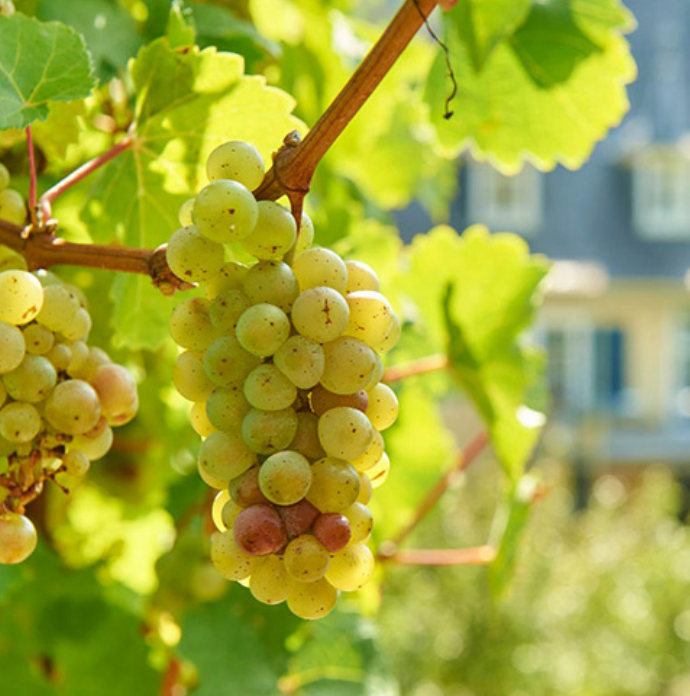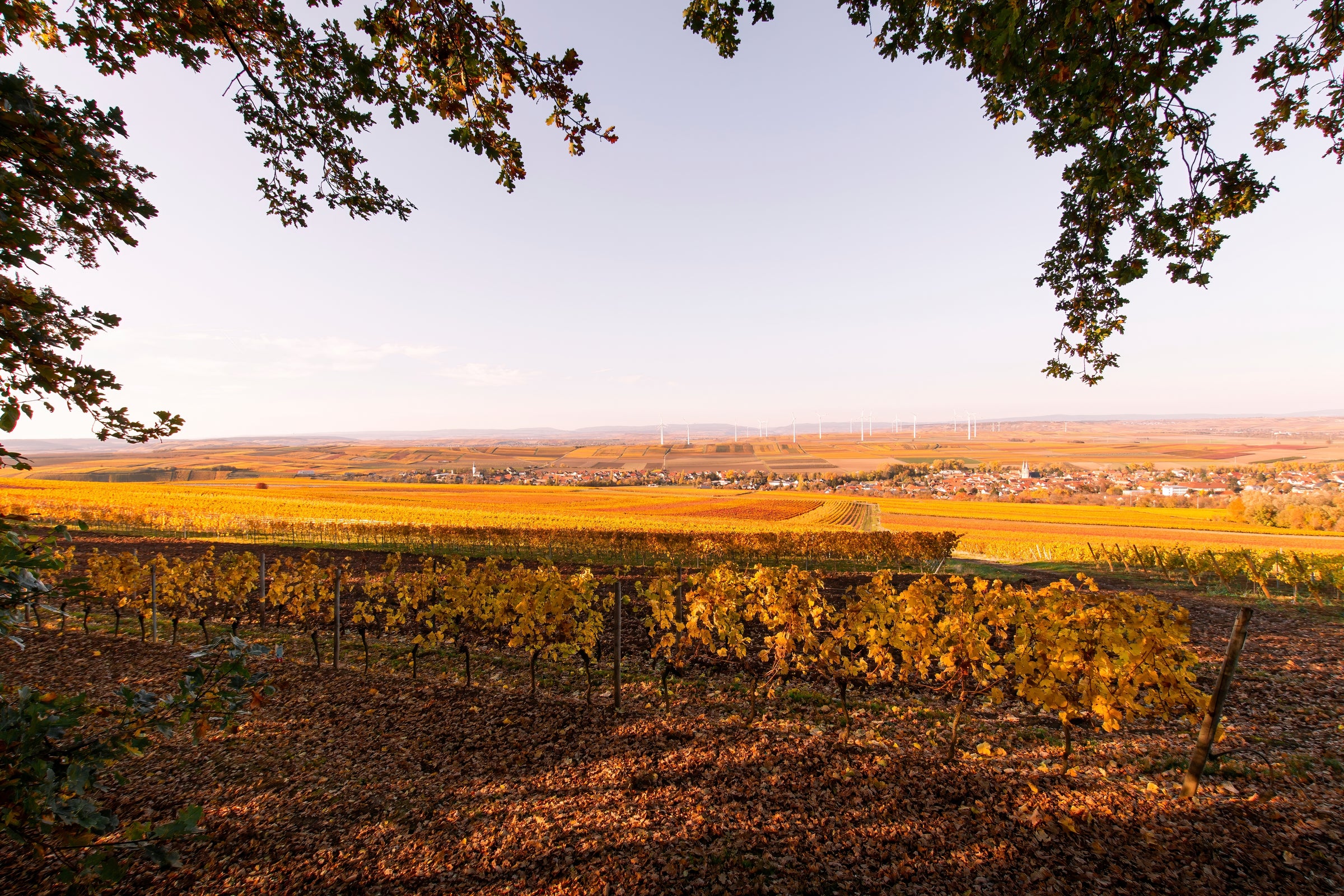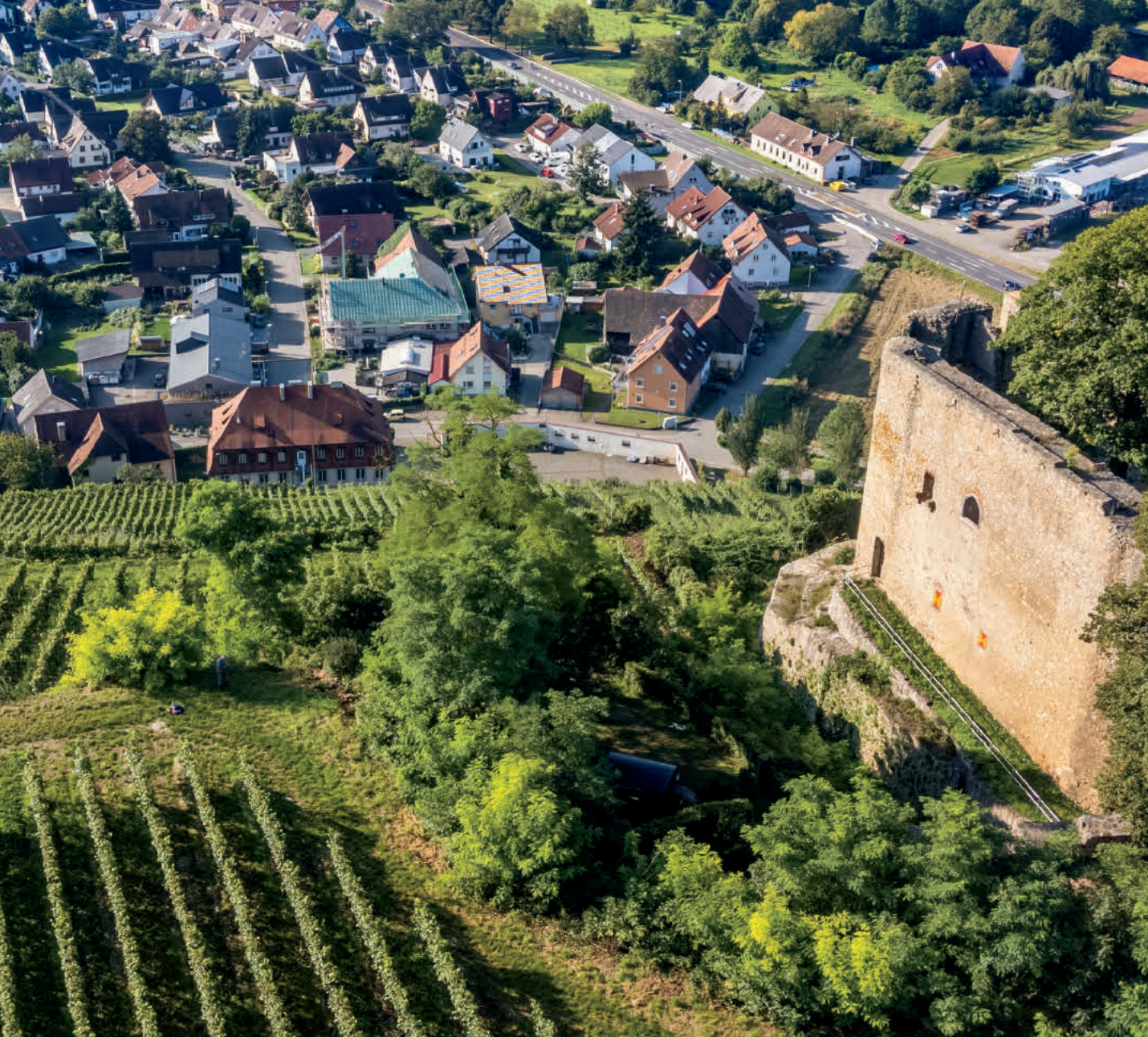You may remember us reminiscing about our visit to Anheuser’s cellar earlier in the year, where we uncorked an impressive lineup of perfectly stored wines from their cold, subterranean maze. One, two, three, four decades we went back, each wine more mesmerizing than the last. And after a dizzying amount of time exploring and tasting a multitude of dusty, cobwebbed bottles, we began trekking back to the surface, content as can be. On the way up, I asked Paul to list one of his favorite wines over the past several decades, and he came to a halt and gave a knowing grin.
We veered off a ways and, after making several calculations, he sunk his hand into an earthy nook and emerged with a half bottle—my eyes lit up. Could it be a coveted ‘TBA’ that so few ever experience? He revealed the label: 2011 Trockenbeerenauslese from the “Krötenpfuhl” vineyard in the village of Kreuznach. He exclaimed that this singular bottling was one of the greatest he’s ever produced. For those who have a soft spot for sweet, this is among the richest and very best. Bring whatever dessert wine, from whichever region, at any price, and this will likely surpass it. Anheuser’s 2011 TBA is one of the rarest treats we’ve offered, and it was directly imported from their cellars just for you. Only three per person today. Happy Holidays!
The Anheusers are steeped in wine history, tracing their ancestry in the village of Bad Kreuznach to the 1600s. They’ve been here so long, they’re considered to be the very first in the entire Nahe region to plant vineyards solely with Riesling. But despite their extensive track record, their operation remains a humble one, and is still worked by the family. The Anheusers have built a fine reputation in the Nahe for stockpiling many decades of vintages in their cellar, but this 2011 TBA stole the show.
Why are ‘TBA’ wines so rare and cherished? In the select few vintages it’s actually made, each noble-rot berry—not cluster—is painstakingly picked by hand after a whopping number of passes through the vineyard. And the little juice that still remains in these shriveled golden nuggets results in some of the world’s richest, most concentrated wine. You may be familiar with the Prädikatswein classification in German, which doesn’t define prestige or quality, but rather a scale of grape ripeness at harvest (though prices soar as you work your way up the levels). “Kabinett” is the base level, which essentially translates into a normal harvest date. With each subsequent classification, grapes are left on the vines longer, which continues all the way up to the ripest, sweetest, and rarest designation of them all: “Trockenbeerenauslese” (excluding “Eiswein,” which targets frozen grapes and doesn’t rely on noble rot a.k.a botrytis). Paul Anheuser’s vines in the village of Kreuznacher have been in his family’s possession for many generations and today’s vineyard, Krötenpfuhl, is where they produce their high quality sweet wines like auslese, beerenauslese, and today's fabled trockenbeerenauslese.
TBA-designated grapes can only be picked when the vintage produces fully ripe grapes that have spent so much time on the vine that full-on bunch rot has occurred. In 2011, the Anheuser team walked through the vineyard multiple times with just one bucket and meticulously hand-picked each botrytised berry, making sure to discard any that had grey, or sour, rot—the malevolent form of rot (yes, even the ‘type’ of rot is incredibly important to distinguish). After transporting them to their nearby winery, a fermentation of great magnitude began: Because of the overwhelming amount of sugar packed into each shriveled grape, it took an astounding 12 months until fermentation was complete (in 2003, fermentation took over three years!). Afterwards, the wine continued aging in old, oak casks until it was bottled in September of 2013 (note: because of the wine’s intense concentration and the Anheusers constantly ‘topping off’ each barrel, oxidation is avoided). The bottled wine then slumbered in their cellar for nearly five years until arriving at our warehouse.
When consuming this succulent beauty, be sure to do so under the right conditions: Pull the cork and pour into all-purpose stems that won’t hamper its long list of dizzyingly rich aromas while maintaining a steady drinking temperature around 50-55 degrees (too cold will mute its perfumes). The tiniest amount will do—don’t go pouring yourself six ounces—because just one sip will resonate for minutes and minutes. All that’s left now is the fun part: smelling and savoring the intoxicating opulence that is Paul Anheuser’s Kreuznacher Krötenpfuhl TBA. The wine pours an intensely viscous, highly reflective amber color with thickset tears that seem irritated that gravity is (albeit ever-so-slowly) pulling them down. On the nose, the wine bursts forth with stewed peaches, apricot jam, ripe mango, freshly spun honey, yellow flowers, wet slate, crushed rocks, beeswax, caramelized nuts, and warm baking spices. All these flavors meld together on the full-bodied, brilliantly rich palate, but this is where TBA separates itself from the hordes of other dessert wines: The acidity is high, easily slicing and dicing the sugar and viscosity, while instantaneously causing your mouth to water despite the intense levels of sweetness at play here. Ideally serve with the attached seared foie gras recipe, or at the end of your Christmas meal with an assortment of fruits (tropical!) and cheeses (blue!) in order to find the best match for you. In the rare chance you don’t drain your bottle, keep it in the fridge and it will last for weeks. As for the ones you’re stowing away for the long haul? Open whenever you desire over your lifetime and leave the remainders for the next generation. Cheers!






